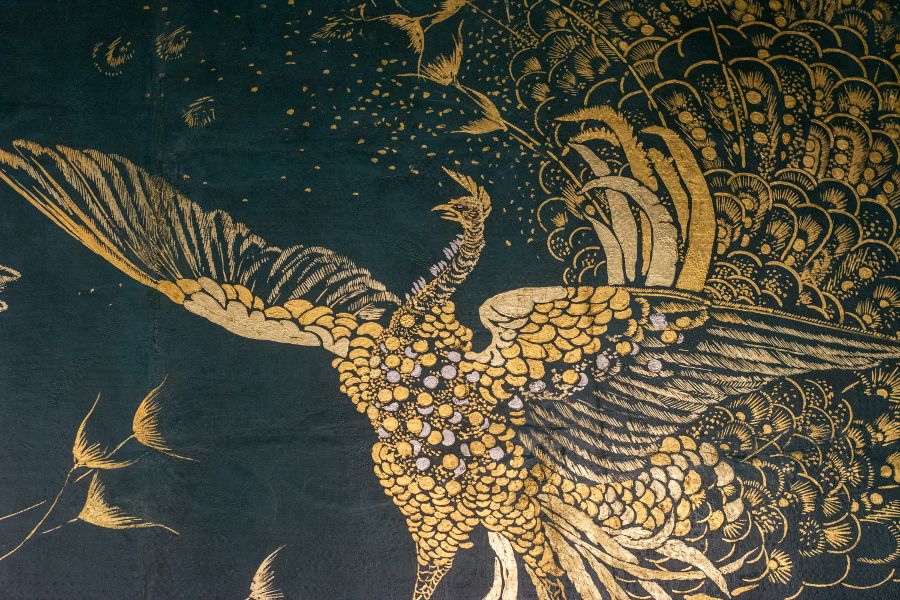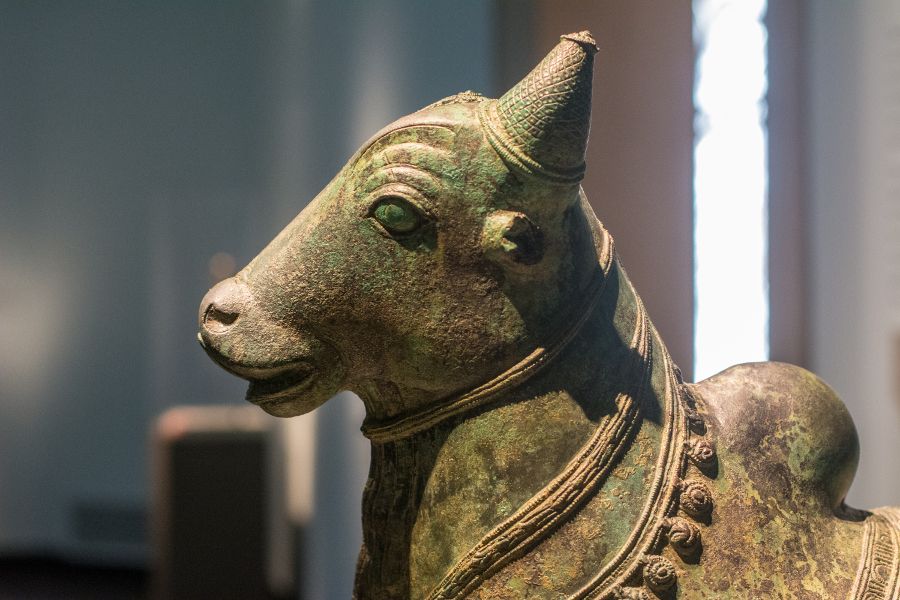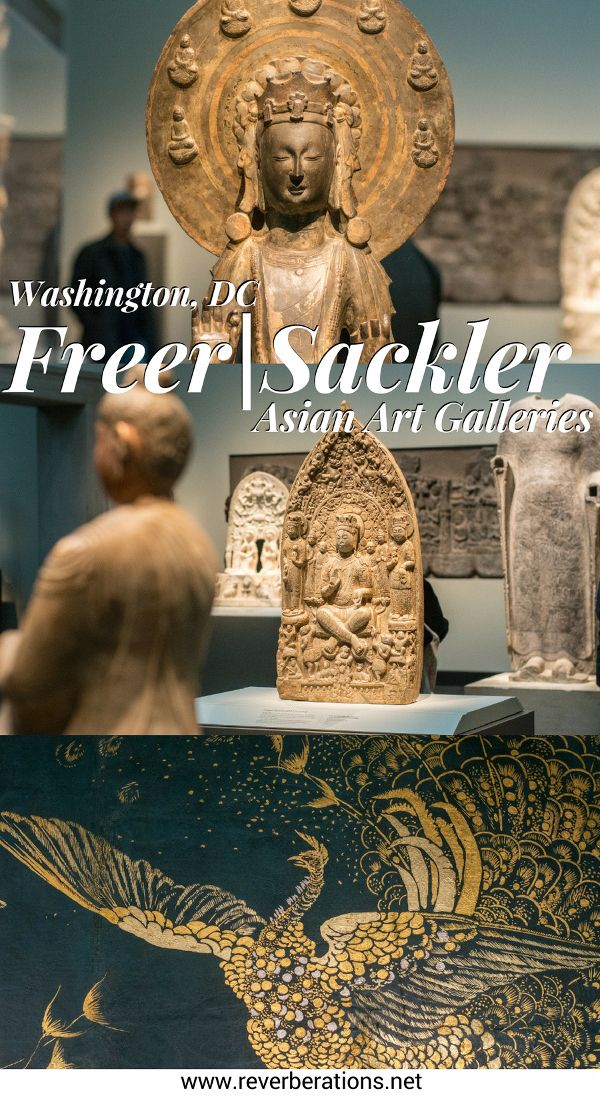The Freer|Sackler, that is the Freer Gallery of Art and the Arthur M. Sackler Gallery, is easy to miss along the imposing and impressive National Mall in Washington, DC. The galleries are surrounded by significant museums. Just across the way is the popular Smithsonian Museum of Natural History and the Smithsonian Castle. The Hirshhorn Museum and the Smithsonian National Air and Space Museum are also nearby neighbors. It’s easy to not notice the Freer|Sackler given all those “distractions,” not to mention its petite buildings, relatively speaking.
But the Freer|Sackler Galleries are home to an impressive collection of Asian art as well as works from the American aesthetic movement, northern Africa, and the Islamic world. What’s more, there’s never been a better time to visit the museum. The dual museums celebrated a reopening in October 2017 after the Freer Gallery of Art was closed for renovations that lasted nearly two years. I recently visited the galleries and to say that the museums house an extraordinary collection is an understatement.
About the Freer|Sackler
The Freer|Sackler are technically two museums with distinct collections. However, the museums are connected and share staff and administrators.
The Freer Gallery of Art
The Freer was founded by Charles Lang Freer, an industrialist based in Detroit, when in 1906 he became the first American to donate his private collection to the United States. When the museum opened in 1923, after delays due to World War I, it was the Smithsonian Institution’s first fine art museum.
Freer’s collection includes over 26,000 objects. He collected paintings, ceramics and priceless artifacts from Asia and the Middle East. Freer also befriended artist James McNeill Whistler and collected many of his works, which you can see today in the museum.
Arthur M. Sackler Gallery
In 1982, New Yorker Dr. Arthur M. Sackler donated his collection of around a thousand pieces of Asian art and objects to the Smithsonian as well as four million dollars. With his endowment, the Institution founded a gallery in his name. Unfortunately, Sackler didn’t live to see his collection on display. He died only four short months before the gallery’s opening in 1987.
Sackler was very philanthropic. Numerous medical and science centers bear his name in addition to galleries. In addition to the Asian objects endowed by Sackler, the governments of Japan and South Korea both contributed to the building of the museum.
The Collections
There’s nothing particularly high tech or innovative about the curation or displays at the Freer|Sackler. But you can tell the galleries are brand new. The objects in each room beckon you but the stands and displays on which they sit fade into the background. Further, the high quality of the objects and art on display makes them that much more impressive, alluring and amazing. Some of the handmade objects from the Middle East, especially the glasswork and the metalwork, are so detailed you could spend hours exploring all of the intricacies.
It should also be noted that the Freer|Sackler isn’t huge. That isn’t a criticism. It’s a blessing. If you have the time to dedicate, you can easily see everything on display in a single visit and not have to rush through. But then again, you’ll want to return for a follow up visit or two. Trust me.
While the Freer Gallery occupies the first floor of the building, the majority of the Sackler Gallery is actually underground. The Freer Gallery of Art also has a lovely courtyard around which the galleries sit.
Whistler’s Peacock Room
The jewel of the Freer Gallery is Whistler’s Peacock Room. A literal room from the home of a British shipping magnate, Whistler redecorated (uninvited!) it while the owner was out of town. The room decoration included the artist’s painting Princess from the Land of Porcelain. Freer acquired both the room and the painting and had them installed in his Detroit home.
Eventually they made their way to the Freer Gallery where you can today see them. And it’s certainly a busy room in terms of decoration. Porcelain objects line the walls of the room. At one end is the Princess from the Land of Porcelain and at the other a golden peacock painted right on the wall.
Getting There
The Freer|Sackler is located on the southern side of the National Mall between Jefferson Drive SW and Independence Avenue just between 12th Street SW and 9th Street SW. The museum does not have any dedicated parking and street parking is limited.
If you’re taking public transportation, the Smithsonian stop of the Metro is close by at the corner of Independence Avenue SW and 12th Street SW.
Entrance to the Freer|Sackler Galleries is free.
Visit Virtually
If you don’t have any plans to visit Washington, DC anytime soon, Google has you covered. As part of the Google Cultural Institute, you can visit the Freer|Sackler virtually. Over 35,000 items have been catalogued digitally as well entire rooms. If you aren’t able to visit in person but still are interested, it’s a great option.
Where To Stay
Find today’s hotel deals in DC on TripAdvisor!
All photos are my own. This post contains affiliate links.




